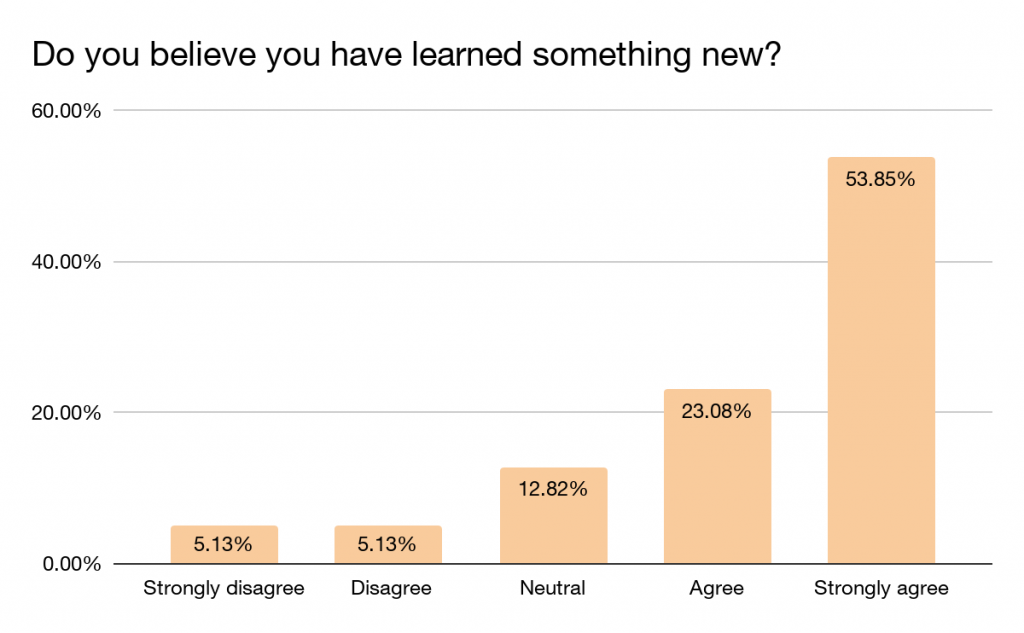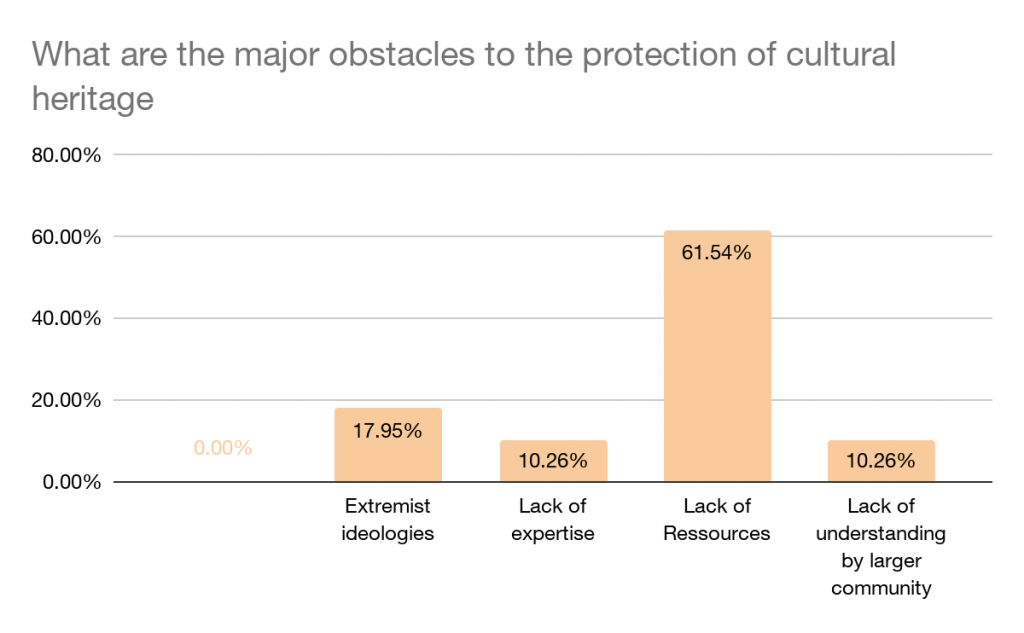Ind 1.1 % of participants that have an enhanced knowledge about Morocco’s approach to preserve cultural and religious heritage. A Moroccan case study will be presented.
The first day of the conference started off with opening remarks, followed by the introduction of Morocco’s efforts towards greater protection of cultural heritage for religious minorities and in particular of Jewish and Christian legacy in the country.
This discussion initiated a reflection on expanding this model of interfaith dialogue in other regions and gathering support for the prevention of conflict based on intolerance and extremist narratives.

The presentation of the Moroccan experience aimed at providing the participants with a case to discuss the challenges and opportunities to develop a regional network for greater protection. 79.48% of the respondents stated to have found the discussions useful and to have learned more information about the Moroccan approach. Unlike 20.51% who do not report an increase in knowledge.
The respondents were also asked to share an aspect of the Moroccan approach that inspired them. 23.08% reported having been interested in the strategic collaborative approach developed by Morocco to the protection of cultural heritage. In particular, the respondents refer to Morocco developments in religious education and institutionally led initiatives. Furthermore, 17.95% answered that they had gained additional information about the inclusion of cultural heritage protection in an economic model of development. As one respondent expresses it, “it is interesting to see how Morocco has been developing its tourism industry and has been promoting cultural sites while at the same time ensuring that religious minorities are not endangered.” For another respondent, “ the strong leadership of the King on this issue shows real commitment and efficacy, it has been extremely beneficial to ensure that cultural heritage is protected.” For 15.38% of the participants, the Moroccan model is inspiring because it includes the preservation of immaterial cultural practices. “Morocco is famous worldwide for its traditions and folklore, and it is very honorable to see the efforts it is taking to preserve its architecture but also the cultural practices that belong to each community,” one of the respondents explains.
Ind 1.2 % of participants reporting to have learned something new about the protection of cultural heritage
Overall, those surveyed felt that they learned something new after attending the conference.

The conference drew particular attention to the role of the international community to support States’ efforts to protect religious heritage.
The survey data showed that 76.93% of the respondents reported having learned something new at the conference. ( 53.85% of the respondents strongly agreed, and 23.08% of the respondents agreed to the statement “ have you learned something new”).
The illustration on the right shows the participants’ responses to the question of obstacles to the protection of cultural heritage for religious minorities. It highlights that the majority of the respondents report that the lack of resources is the major obstacle to the protection of cultural heritage (61.54%).

They further explained that the lack of resources is both financial and institutional. Several respondents mentioned the lack of political awareness among institutions. According to the analysis of the open-ended questions, the respondents highlighted that in some communities, the issues of management relates to the capacity to reconcile political interest and community needs.
One of the respondents later explained that the issue of support is central to ensure the efficiency of the efforts “Listening to other speakers shows the importance of being supported by a network and working collaboratively. Country leaders and politicians should understand the connection between protecting religious minorities and the development of the country.”